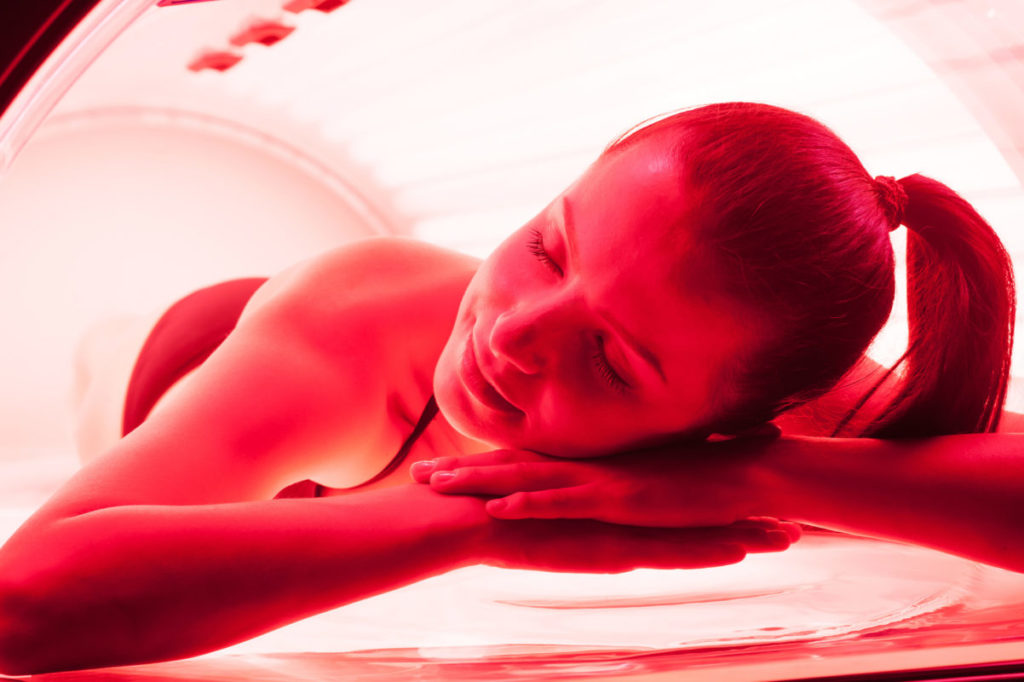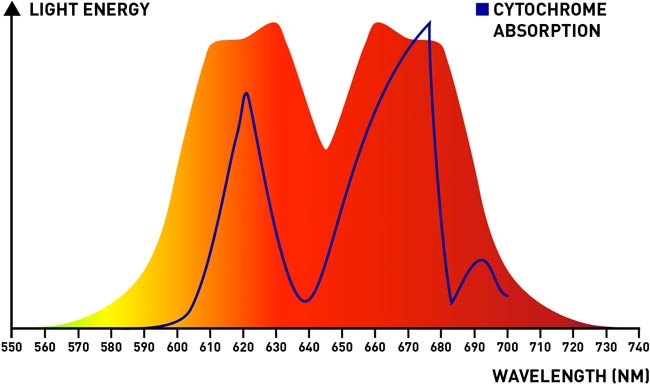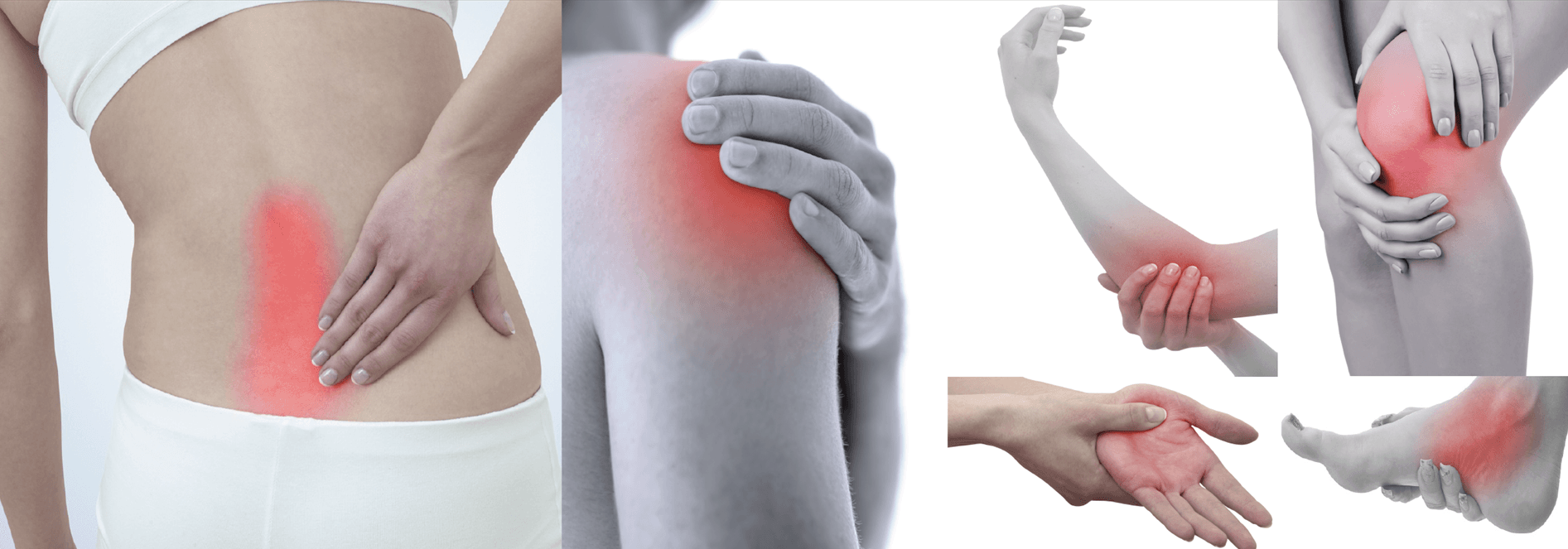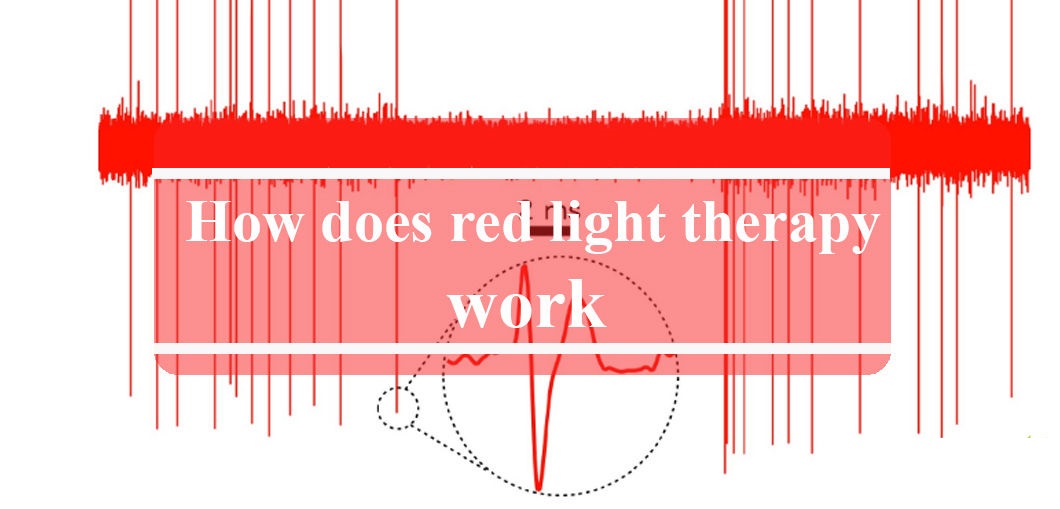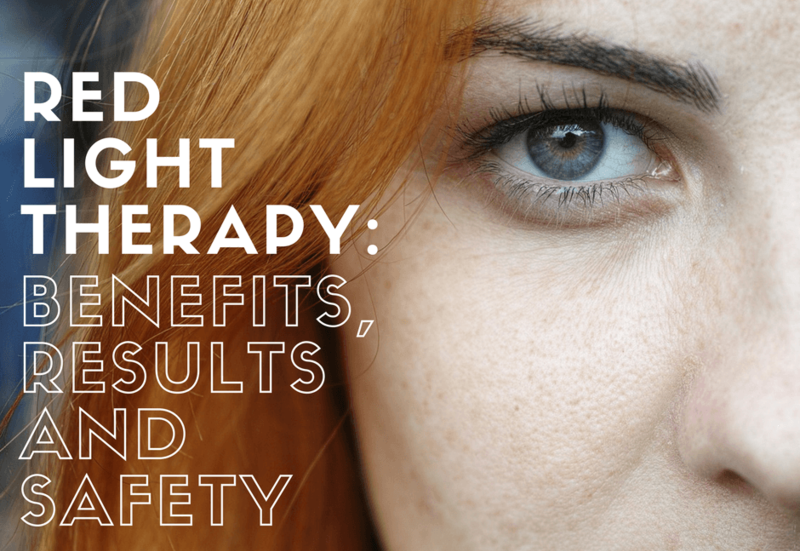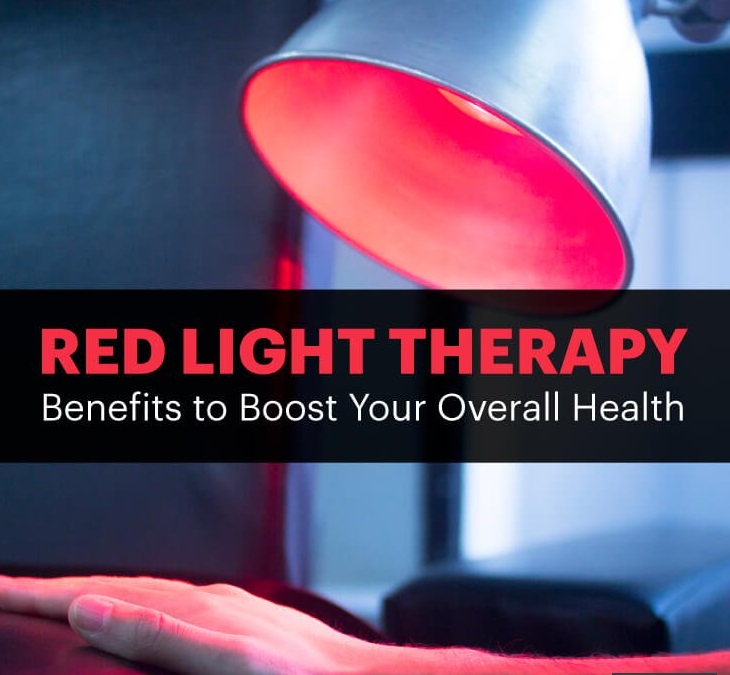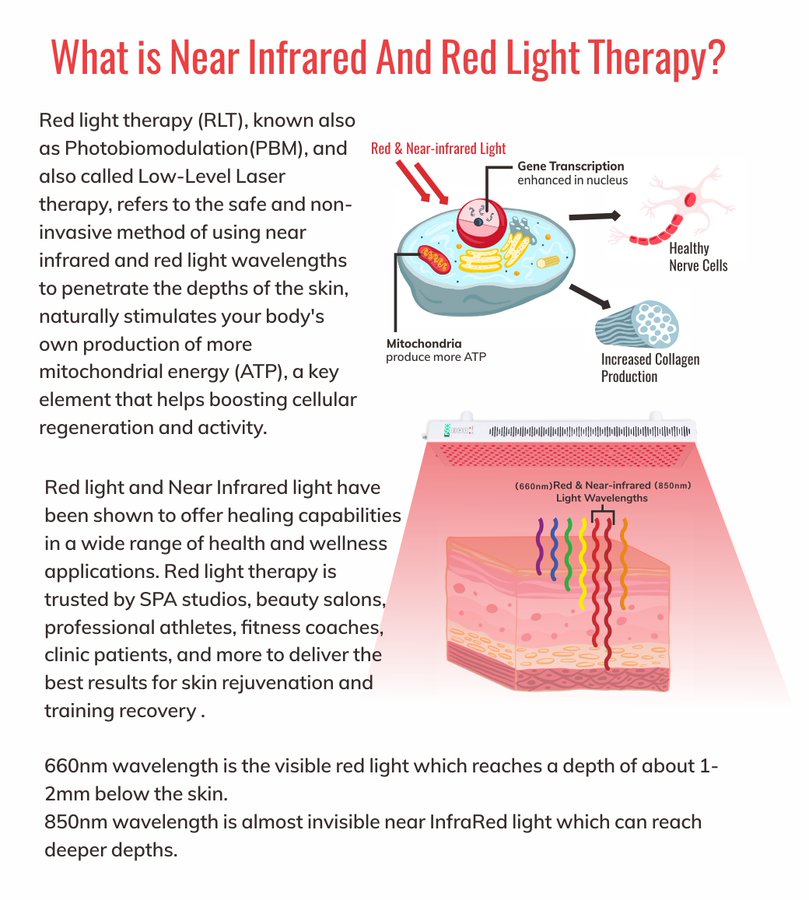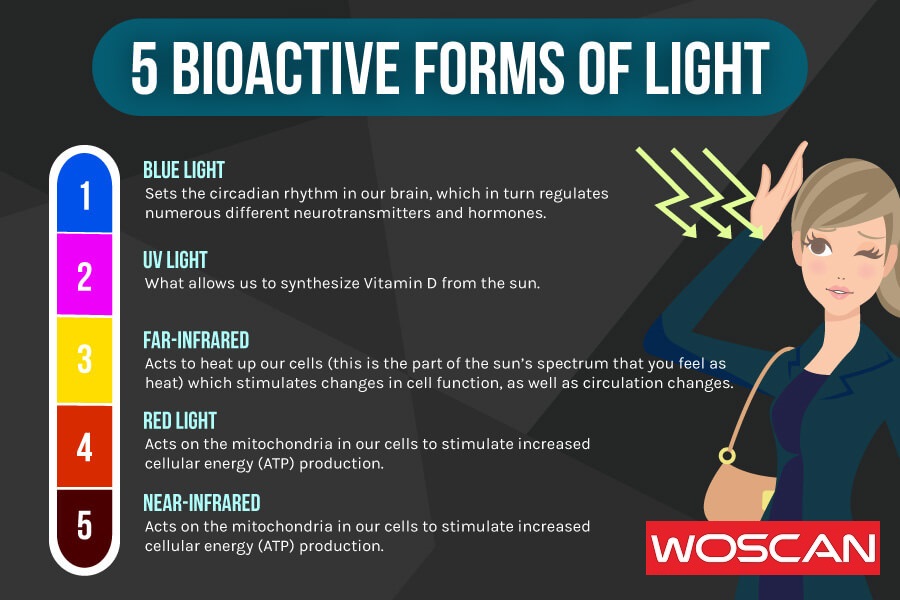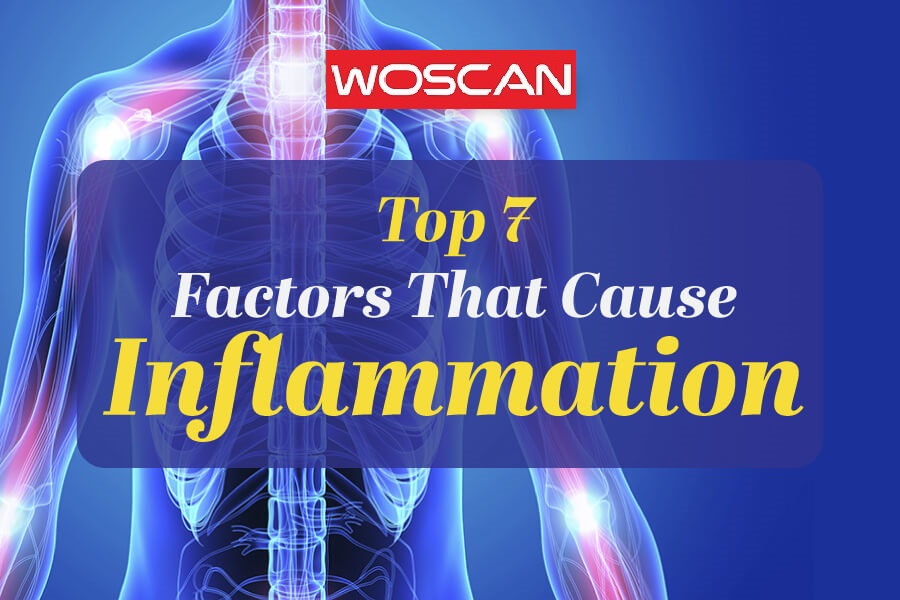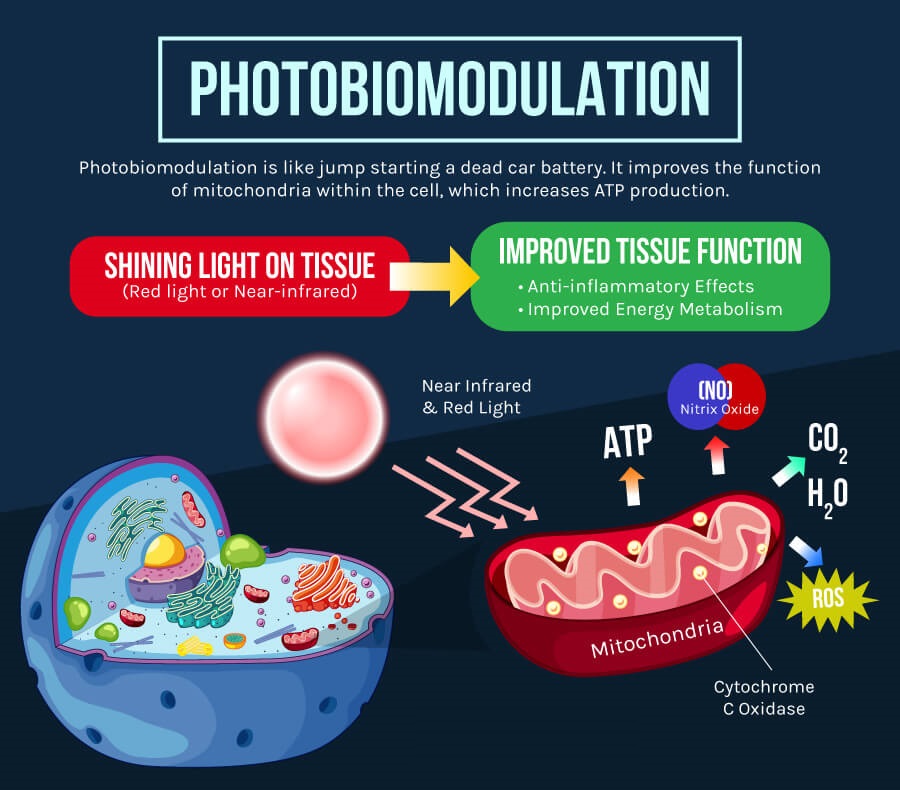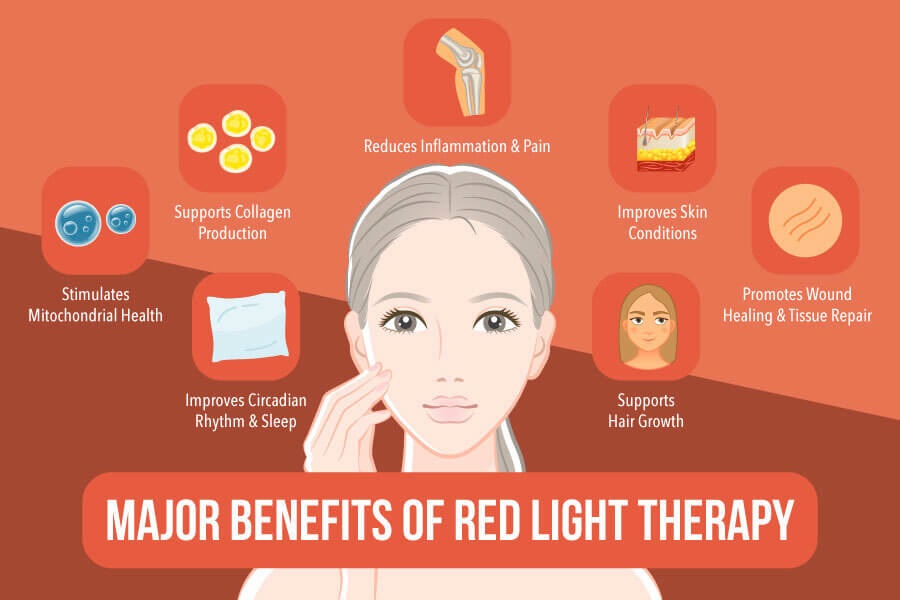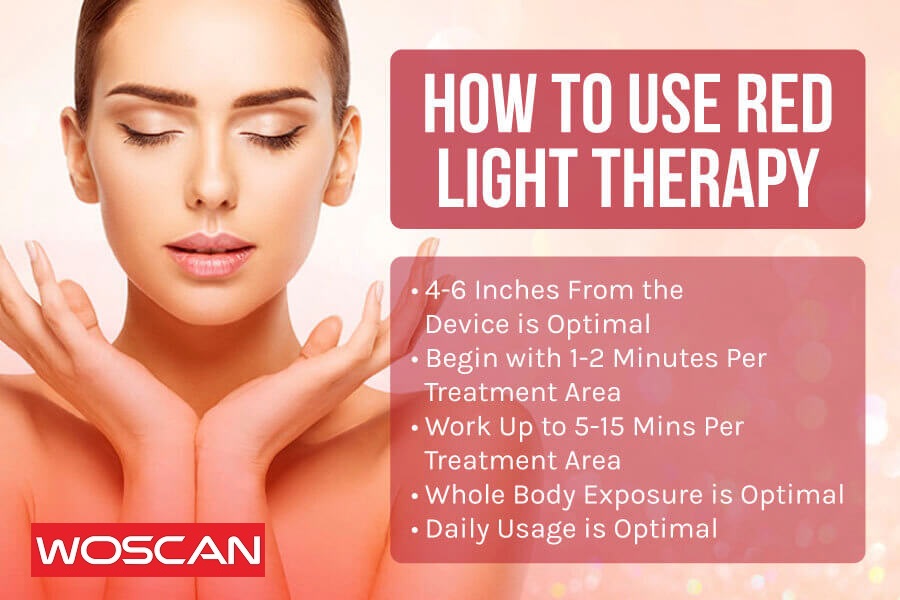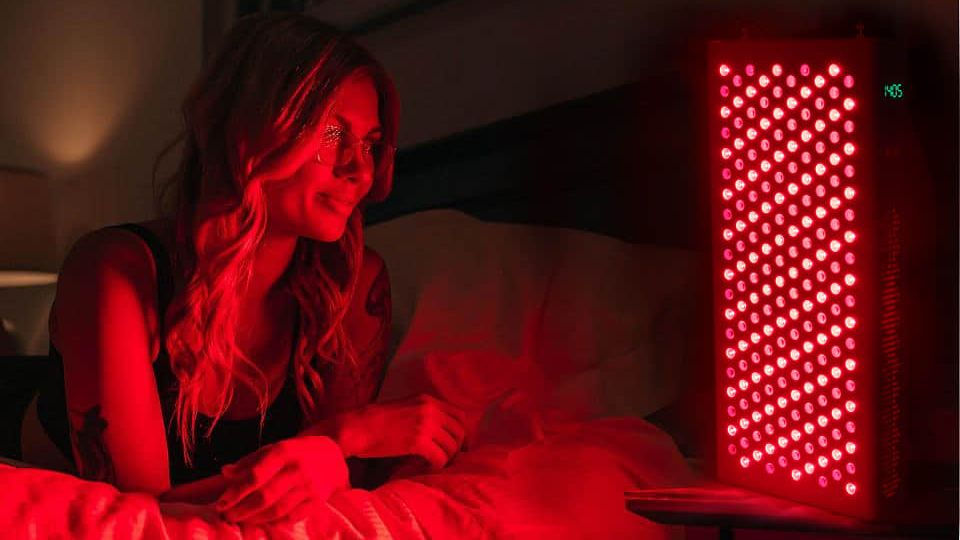
In today’s modern world, where technological innovations are rapidly advancing the field of healthcare, Red Light Therapy (RLT) emerges as a promising frontier in non-invasive pain management. Rooted in the heart of cellular biology and the intricacies of photobiomodulation, RLT has evolved over the years to become more than just a novel approach; it’s now backed by rigorous scientific scrutiny and clinical evidence.
While the name “Red Light Therapy” may evoke images of radiant crimson beams, its application delves much deeper than its visible spectrum. In essence, RLT is a form of phototherapy that harnesses specific wavelengths of light, predominantly in the red and near-infrared range, to interact with our body’s cellular machinery. At the epicenter of this interaction is the mitochondria, the powerhouse of our cells. RLT’s mechanism of action revolves around a pivotal enzyme within the mitochondria known as cytochrome c oxidase. When exposed to red light, this enzyme facilitates a surge in the production of adenosine triphosphate (ATP), the primary energy currency of the cell.
Such an uptick in cellular energy not only revitalizes cells but also plays a fundamental role in mitigating inflammation, repairing tissue damage, and, most pertinently for our discussion, alleviating pain. Given the widespread prevalence of pain-related disorders, from osteoarthritis to muscle soreness and even neuropathic pain, understanding and harnessing the potential of RLT becomes paramount.
As we dig deeper into this guide, we will unearth the intricate details of how RLT operates, the science underpinning its benefits, and how it offers a ray of hope to those seeking relief from persistent pain. Whether you’re a skeptic, a curious reader, or someone in search of a promising pain management solution, we invite you to explore the transformative world of Red Light Therapy.
Understanding the Basics of Red Light Therapy
Red Light Therapy (RLT) might seem, at first glance, to be a simple application of light, but beneath this surface simplicity lies a complex interplay of biology, science, and technology. To truly appreciate its potential in pain management, one must first understand its fundamental principles.
At its core, RLT is a form of phototherapy that uses specific wavelengths of light, primarily in the red and near-infrared spectrum. Unlike UV rays, which can be harmful to the skin, red and near-infrared light are non-ionizing, meaning they don’t cause DNA damage or contribute to skin cancer.
While we often group RLT under one umbrella, it’s essential to differentiate between the distinct wavelengths it employs:
- Red Light (630-700 nm): Visible to the human eye, red light targets the skin’s outer layers, making it effective for skin-related conditions and wound healing.
- Near-Infrared Light (700-1100 nm): Invisible to the naked eye, near-infrared light penetrates deeper into the body, reaching muscles, joints, and even bones. It’s this depth of penetration that renders it particularly beneficial for pain and inflammation deeper within the body.
The therapeutic use of light isn’t a new concept. Historically, sunlight was a common remedy for various ailments. However, the modern incarnation of RLT began in the late 20th century, particularly with the advent of lasers and LEDs. The key was understanding that specific wavelengths could drive specific biological reactions without the heat and tissue damage associated with high-powered lasers. Over the decades, RLT has been refined, studied, and adapted for various medical and aesthetic applications.
THE HEART OF THE MECHANISM – THE MITOCHONDRIA:
Any discussion about RLT’s workings would be incomplete without mentioning the mitochondria, often dubbed the ‘powerhouse of the cell’. Every cell in our body contains these organelles responsible for producing adenosine triphosphate (ATP), the primary energy currency of the cell. The efficiency of this energy production can influence everything from cellular health to overall tissue function.
CYTOCHROME C OXIDASE & PHOTOBIOMODULATION:
Here’s where the magic happens. Cytochrome c oxidase, a crucial enzyme within the mitochondria, has the unique ability to absorb red and near-infrared light. This absorption boosts its activity, leading to an increase in ATP production. This process, known as photobiomodulation, essentially modulates cellular function using light. With more ATP available, cells can function more optimally, repair damage, combat inflammation, and, importantly for our context, help in pain alleviation.
Grasping these foundational aspects of RLT is vital in understanding its profound impact on pain management. With a balance of biology, science, and technology, RLT stands as a testimony to how innovative, non-invasive therapies can offer relief in a world riddled with chronic pain challenges.
The Biological Mechanism Behind RLT
Delving into the heart of Red Light Therapy (RLT) requires a deep understanding of the biological machinery within our cells and the intricate ways in which light interacts with them. While the therapeutic effects of RLT are widely recognized, its true power lies in its physiological mechanism of action. Let’s explore this captivating realm of cellular interactions, energy production, and light-induced modulation.
- Role of Mitochondria in Cells and Energy Production:
Every cell in our body is a hub of various activities, and central to these operations is the mitochondria. Often described as the ‘powerhouse of the cell,’ the mitochondria are responsible for producing the energy our cells need to perform their myriad functions. This energy is stored in a molecule called adenosine triphosphate (ATP). - Cytochrome c Oxidase – The Luminous Link:
Within the intricate architecture of the mitochondria lies an enzyme of paramount significance – cytochrome c oxidase. This enzyme plays a pivotal role in the final stages of cellular respiration, a process where cells convert nutrients into ATP. What makes cytochrome c oxidase particularly interesting in the context of RLT is its ability to absorb light, especially in the red and near-infrared spectrum. - Interaction between Red Light and Cytochrome c Oxidase:
When exposed to these specific wavelengths of light, cytochrome c oxidase undergoes a temporary increase in activity. This acceleration translates to a more efficient electron transport chain, which, in turn, boosts the production of ATP. Such a surge in ATP equips cells with the additional energy required to optimize their functions. - Photobiomodulation – The Science of Light and Life:
This fascinating interaction between light and cytochrome c oxidase falls under the broader category of photobiomodulation. Photobiomodulation refers to the modulation or alteration of cellular function using specific light wavelengths. Through this process, light isn’t merely a passive observer but an active participant that directly influences cellular activity. - Consequences of Increased ATP Production:
A boost in ATP has wide-ranging implications on cellular health and activity. Some of the notable effects include:
-Improved Cell Viability and Proliferation: Cells become more resilient and can divide and proliferate more effectively.
-Decreased Inflammatory Mediators: The therapy can lead to a reduction in pro-inflammatory cytokines, addressing the root of many pain-related conditions.
-Enhanced Collagen Production: Beneficial for skin health, wound healing, and tissue repair.
By delving into the cellular intricacies of RLT, we can begin to appreciate the profound ways in which this therapy influences biological processes. The synergy between light and life, as witnessed in RLT, offers a promising avenue for non-invasive, effective pain management, rooted deeply in the tenets of cellular biology and physiology.
Scientific Evidence for Red Light Therapy and Pain
Red Light Therapy (RLT), particularly its subcategory of Low-Level Laser Therapy (LLLT) and Photobiomodulation (PBM), has garnered significant attention in recent years for its potential in pain management. As with any emerging therapeutic modality, rigorous scientific scrutiny is crucial to validate its efficacy and understand its nuances. Below, we explore some pivotal studies that shed light on RLT’s role in pain relief and management.
- Understanding Biochemical Interactions:
In the study titled Review of Literature on Low-level Laser Therapy Benefits for Nonpharmacological Pain Control in Chronic Pain and Osteoarthritis, the researchers remarked: “LLLT has also been seen to significantly reduce pain in the acute setting; it is proposed that LLLT is able to reduce pain by lowering the level of biochemical markers and oxidative stress, and the formation of edema and hemorrhage.”[1]
This finding underscores the multifaceted ways in which RLT interacts with cellular mechanisms to mitigate pain. By addressing biochemical markers and reducing oxidative stress, LLLT offers a comprehensive approach to pain management, emphasizing not just symptomatic relief but also targeting underlying causes. - RLT and the Aging Population:
As individuals age, the prevalence of chronic pain conditions often increases, with osteoarthritis being a common complaint. In a meta-analysis titled The Effects of Photobiomodulation on Knee Function, Pain, and Exercise Tolerance in Older Adults: A Meta-analysis of Randomized Controlled Trials, the research highlighted: “In older adults who exercise regularly, PBMT can potentially provide additional pain relief, improve knee joint function, and increase knee joint range of motion.”[2]
This insight emphasizes the synergistic potential of combining exercise with RLT in older populations, showcasing the therapy’s versatility and adaptability across different demographic groups. - Addressing Refractory Conditions:
Some pain conditions are notoriously challenging to manage due to their resistance to conventional therapeutic interventions. Oral mucositis is one such condition, often presenting as a painful side effect in cancer patients undergoing chemotherapy or radiation. In the study titled High-power laser photobiomodulation therapy for immediate pain relief of refractory oral mucositis, researchers noted: “High-power laser PBM may provide nonpharmacologic, patient-friendly, long-lasting, rapid pain relief for refractory OM.”[3]
This finding underscores RLT’s potential not only in conventional pain scenarios but also in complex, refractory conditions, further solidifying its position in the pain management toolkit.
The growing body of scientific evidence underscores the potential and versatility of Red Light Therapy in addressing various pain conditions. By continually updating our knowledge through rigorous research, we can ensure that RLT’s applications are both effective and rooted in solid scientific foundations.
How RLT Targets Different Types of Pain
Pain, in its various forms and intensities, is a multifaceted experience that can be influenced by a myriad of factors, from biological to environmental. Red Light Therapy (RLT), through its unique physiological mechanisms of action, offers a dynamic approach that can be tailored to address different types of pain. Let’s explore how RLT interacts with the diverse pain spectrum.
ACUTE VS. CHRONIC PAIN – THE DIFFERENTIAL IMPACT OF RLT:
- Acute Pain: Typically resulting from an injury or inflammation, acute pain is a sudden and often sharp sensation. RLT, by enhancing ATP production, promotes faster cellular repair and reduces inflammation, offering relief in acute pain scenarios.
- Chronic Pain: This long-term pain, persisting for weeks to years, can stem from persistent inflammation or dysfunctional neural circuits. RLT aids in reducing pro-inflammatory cytokines and modulating nerve signals, providing potential relief for chronic pain sufferers.
DEPTH OF LIGHT PENETRATION – NEAR-INFRARED VS. RED LIGHT:
The depth at which RLT can influence tissues is largely determined by the wavelength used.
- Red Light (630-700 nm): Primarily affects superficial tissues, making it ideal for skin conditions, wounds, and surface inflammations.
- Near-Infrared Light (700-1100 nm): Penetrates deeper, reaching muscles, joints, and even some bones. This depth is particularly beneficial for conditions like osteoarthritis, deep tissue injuries, or muscle soreness.
In essence, the versatility of Red Light Therapy in targeting different pain types lies in its multifaceted physiological mechanisms. Whether it’s modulating cellular functions, enhancing tissue repair, or influencing neural pathways, RLT offers a comprehensive approach rooted deeply in biology, science, and technology. As our understanding of pain evolves, so too does the potential of RLT to provide tailored, effective relief.
Technical Specifications and Best Practices for Using RLT
The therapeutic potential of Red Light Therapy (RLT) for pain relief is deeply intertwined with its technical specifics and application methodologies. Ensuring the correct technical parameters is vital to harness the full therapeutic power of RLT. Let’s delve into the key technical specifications and best practices when using RLT for pain management.
SELECTING THE RIGHT WAVELENGTH FOR SPECIFIC PAIN CONDITIONS:
The biological effects of RLT are closely tied to the specific wavelengths used. For pain management, the following wavelengths have been identified as particularly effective, each interacting differently with cellular components:
- 650nm & 660nm: These wavelengths within the red light spectrum are optimal for superficial tissue issues, including skin conditions and minor inflammations. They primarily influence the outer layers of the skin and enhance the healing of wounds and scars.
- 810nm, 820nm, & 830nm: Falling within the near-infrared spectrum, these wavelengths penetrate deeper, making them suitable for muscular pain, joint issues, and deeper tissue concerns. Their interaction with cytochrome c oxidase in the mitochondria is especially pronounced, driving enhanced ATP production.
- 900nm & 980nm: These wavelengths, also within the near-infrared range, further deepen tissue penetration, making them effective for conditions like osteoarthritis and significant muscle injuries. Their efficacy in neural modulation also plays a role in addressing neuropathic pain.
INTENSITY AND POWER OUTPUT:
Intensity, often measured in milliwatts per square centimeter (mW/cm²), is another essential consideration. A device with a higher intensity will typically require shorter treatment times. For effective pain relief, higher doses are more effective.
To make it easier to calculate session times, visit our Red Light Dosing Calculator.
The efficacy of Red Light Therapy for pain is not just in its biological mechanism but also in its precise technical application. By adhering to the recommended technical specifications and best practices, users can harness the full potential of RLT, ensuring both safety and effectiveness.
As we’ve traversed the intricate landscape of Red Light Therapy (RLT), we’ve ventured into its profound depths, encompassing cellular biology, advanced technology, and therapeutic potential. RLT isn’t just another modality on the pain relief spectrum; it stands as a testament to how modern scientific advancements can dovetail seamlessly with our body’s innate healing mechanisms.
At its core, RLT is grounded in the principles of photobiomodulation. By harnessing specific light wavelengths, primarily within the red and near-infrared spectrum, RLT interacts with cytochrome c oxidase in our cellular mitochondria. This interaction, underpinned by scientific rigor, boosts the production of adenosine triphosphate (ATP), the energy currency of our cells. Such a boost not only revitalizes cellular function but also plays a pivotal role in mitigating inflammation, promoting tissue repair, and, most notably, alleviating pain.
Compared to other pain management modalities, RLT offers a unique blend of advantages: it’s non-invasive, devoid of side effects commonly associated with medications, and provides both immediate symptomatic relief and addresses some of the root causes of pain. This combination of immediate and long-term benefits underscores RLT’s potential as a comprehensive tool in pain management.
In a world where chronic pain poses not just physical but also emotional challenges, therapies like RLT provide hope. They represent a fusion of nature and technology, where light becomes a healer and science, a beacon of hope. As we move forward, it’s essential for researchers, practitioners, and patients to continue exploring, understanding, and harnessing the transformative potential of Red Light Therapy.
Here’s to a future where pain, though an inevitable part of the human experience, can be managed and mitigated with the brilliance of light, guided by the hand of science.
[1] Dima R, Tieppo Francio V, Towery C, Davani S. Review of Literature on Low-level Laser Therapy Benefits for Nonpharmacological Pain Control in Chronic Pain and Osteoarthritis. Altern Ther Health Med. 2018 Sep;24(5):8-10. PMID: 28987080.
[2] Li BM, Zhang CK, He JH, Liu YQ, Bao XY, Li FH. The Effects of Photobiomodulation on Knee Function, Pain, and Exercise Tolerance in Older Adults: A Meta-analysis of Randomized Controlled Trials. Arch Phys Med Rehabil. 2023 Jul 5:S0003-9993(23)00375-1. doi: 10.1016/j.apmr.2023.06.016. Epub ahead of print. PMID: 37419235.
[3] Finfter O, Cohen R, Hanut A, Gavish L, Zadik Y. High-power laser photobiomodulation therapy for immediate pain relief of refractory oral mucositis. Oral Dis. 2023 May 19. doi: 10.1111/odi.14618. Epub ahead of print. PMID: 37203784.


